
- Home
- Photography Tours
- Diary / Blog
- Galleries
- Foreign Trips
- Tasmania 2016
- NE Queensland 2016
- Western Alps 2016
- NE Spain 2016
- Australia's Wet Tropics 2015
- Australia's Top End 2015
- SW Australia 2015
- Switzerland 2015
- Andalucia 2015
- Belize 2015
- Australia 2014
- Switzerland 2014
- Belize 2014
- Bahama Islands 2014
- Switzerland 2013
- Ecuador 2012-2013
- Florida 2011-2012
- Vancouver Island 2011
- Australia 2010
- Peru 2008
- Bulgaria 2007
- Lesvos 2006
- California 2006
- New Zealand 2005
- Extremadura 2005
- Goa, India 2004
- The Gambia 2003
- About
March 2014
1st-4th March 2014
Crooked Tree, Belize
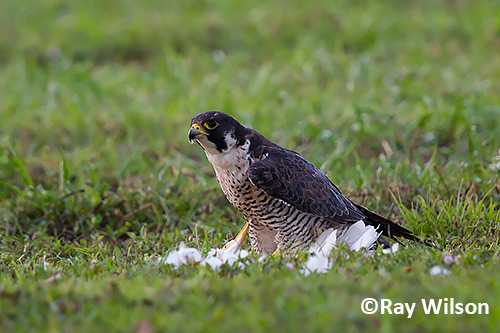
female Peregrine Falcon (Falco peregrinus) eating a cattle egret
On two successive mornings a female Peregrine killed and ate a Cattle Egret on the lawn of one of the houses bordering the road from Bird's-eye Lodge. The first time I only saw the aftermath: a pile of feathers and the remains of a wing. The second day, just before the sun poked its head above the horizon, I caught a glimpse of a speeding grey shape out of the corner of my eye and then an explosion of white feathers as the Peregrine smashed into the Egret at full speed, mortally wounding the hapless bird. The Egret continued to weakly struggle against the weight of the Peregrine sitting on top of it for a few seconds, but it didn't last long as the falcon, completely ignoring the Egret's struggles, proceeded to quickly rip it to pieces. After only 5 minutes, all that was left was the Egret's beak, wings and a pile of blood-stained white feathers.
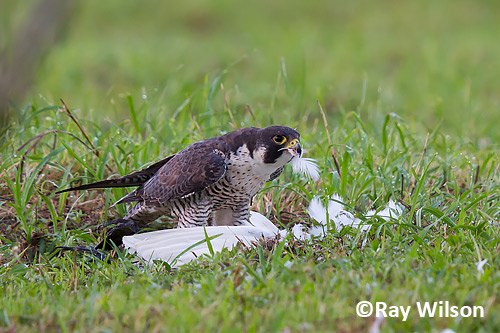
female Peregrine Falcon (Falco peregrinus) eating a cattle egret
After such a stark display of nature at its most brutal, the rest of my day was spent photographing more gentle subjects such as the comical Northern Jacanas with their enormously over-sized feet...

Northern Jacana (Jacana spinosa)
The long elongated toes of the Jacana spread its weight over a large surface area and allow it to walk on floating vegetation without sinking into the water.
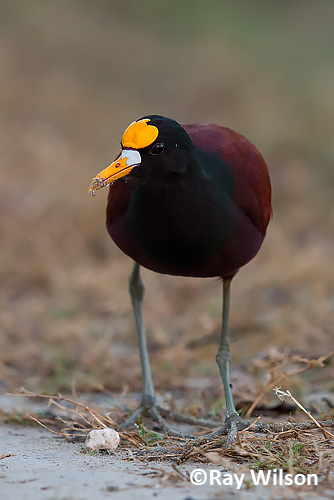
Northern Jacana (Jacana spinosa)
A Wilson's Snipe also joined the regulars in the roadside pond for a couple of days....
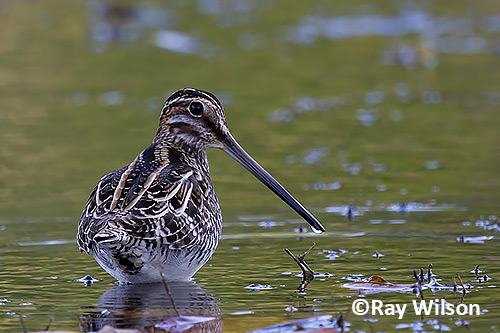
Wilson's Snipe (Galinago delicata)
At another pond a bit further up the road, a Bare-throated Tiger-heron could regularly be seen fishing among the flooded tree roots.
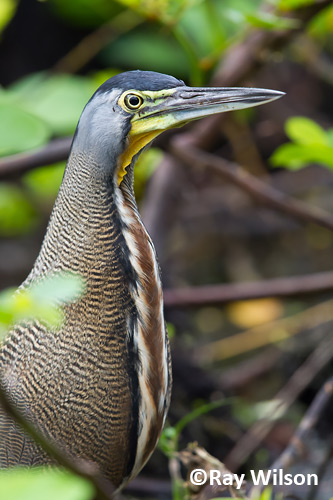
Bare-throated Tiger-heron (Tigrisoma mexicanum)
An American Pygmy Kingfisher could also occasionally be observed here, usually perching on a branch overhanging the water in the deep shadow.
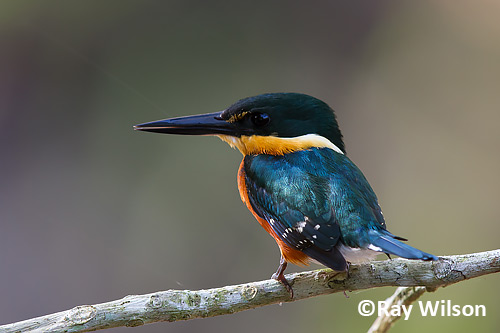
American Pygmy Kingfisher (Chloroceryle aenea)
Both Golden-fronted and its smaller, close relative, the Red-vented Woodpecker gave good close views at times and I once even saw them both in the same tree at the same time, which provided a good opportunity to compare the two side-by-side.
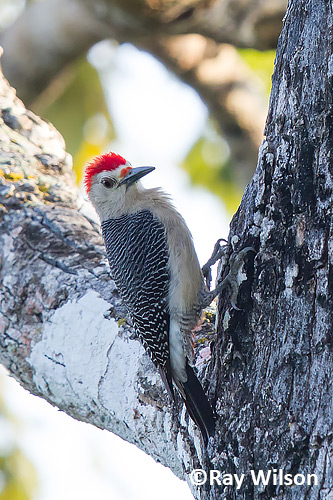
Golden-fronted Woodpecker (Melanerpes aurifrons) |
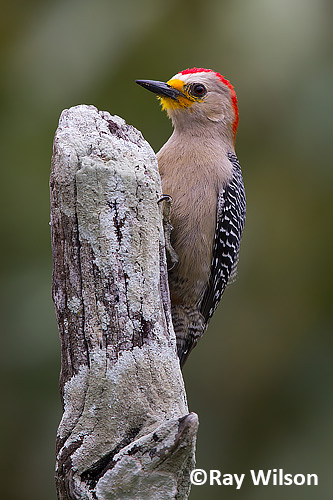
Red-vented Woodpecker (Melanerpes pygmaeus) |
Hummingbirds are not particularly common in the Crooked Tree area, with Rufous-tailed Hummingbird making up over 90% of the sightings, but Green-breasted Mango, Canivet's Emerald and Ruby-throated Hummingbird also all occur.
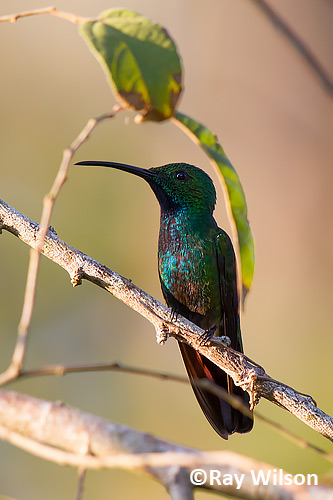
Green-breasted Mango (Anthracothorax prevostii)
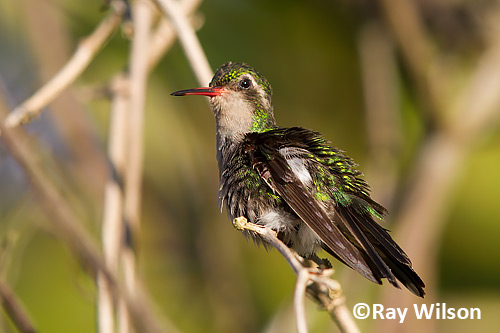
female Canivet's Emerald (Chlorostilbon canivetii)
All the other Masked Tityras I've seen on my travels around South America have always been perched on the tops of enormously high trees, so it was a welcome surprise to find an obliging female in the lower branches of a roadside tree
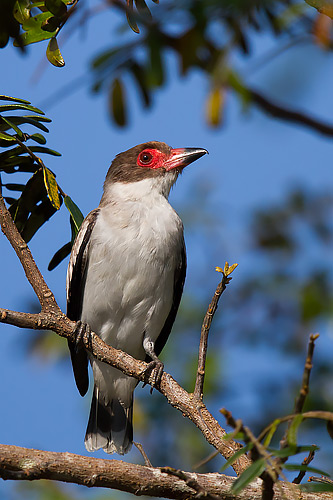 |
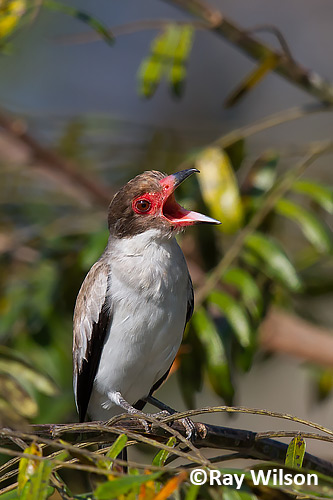 |
Masked Tityra (Tityra semifasciata)
A beautiful male Rose-throated Becard was also flycatching for insects in the same tree.
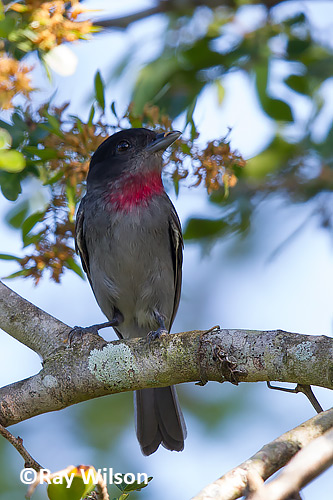
male Rose-throated Becard (Pachyramphus aglaiae)
Brown Jays, Spot-breasted Wrens and Dusky-capped Flycatchers were among the other Belizean residents frequently observed in the roadside vegetation.
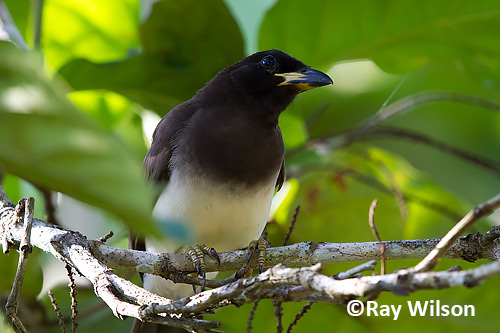
Brown Jay (Cyanocorax morio)
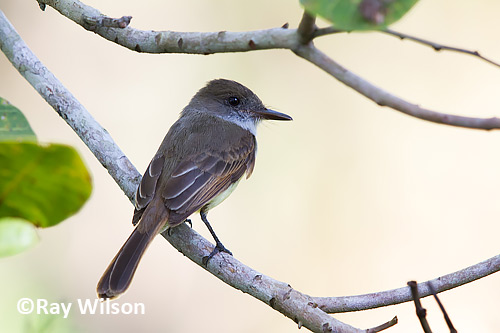
Dusky-capped Flycatcher (Myiarchus tuberculifer)
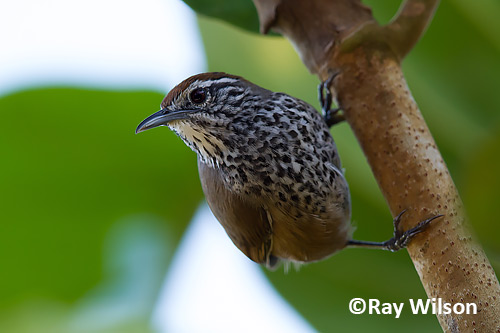
Spot-breasted Wren (Thryothorus maculipectus)
...while winter migrants from North America included Summer Tanager and Yellow-throated Warbler.
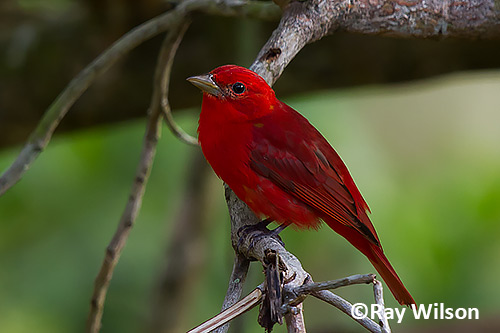
Summer Tanager (Piranga rubra)
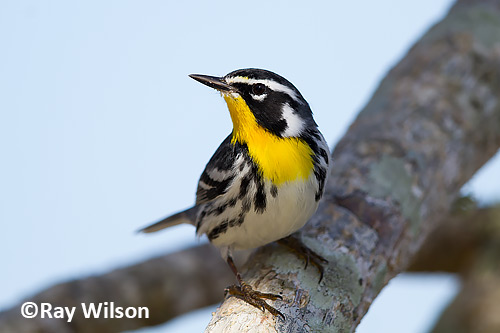
Yellow-throated Warbler (Dendroica dominica)
At night, Common Pauraques regularly sat on the road beneath the street lamps waiting for moths to fly by.

Common Pauraque (Nyctidromus albicollis)
The following morning, I went on a boat trip out onto the lagoon and along part of Spanish Creek.
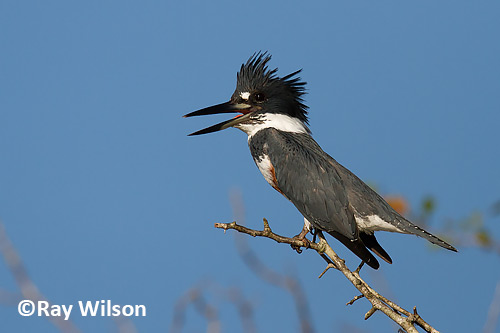
female Belted Kingfisher (Ceryle alcyon)
Three species of Kingfisher were seen on the trip, although most of them kept too far away to allow me to photograph them. The female Belted Kingfisher, shown above, was the exception to the rule.
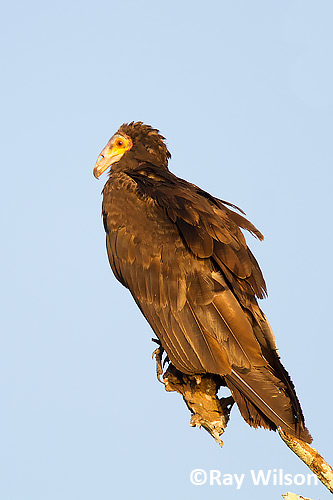
Lesser Yellow-headed Vulture (Cathartes burrovianus) |
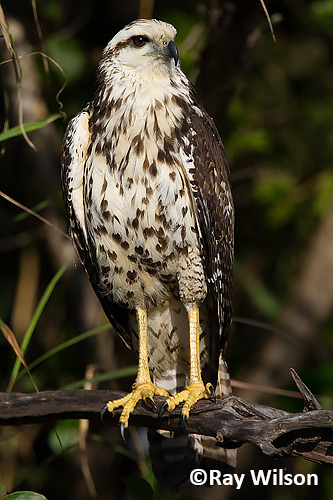
juvenile Great Black Hawk (Buteogallus urubitinga) |
Raptors formed the majority of photographic subjects on the boat trip with both Lesser Yellow-headed Vulture and an immature Great Black Hawk both allowing us to approach quite closely without any sign of concern.

Black-collared Hawk (Busarellus nigricollis)
Close to its nest tree, an adult Black-collared Hawk was agitatedly dive-bombing a neighbouring tree. After a bit of searching and maneuvering the boat into a better position we were at last able to spot the object of the hawk's ire: a sleeping Northern Tamandua who was completely ignoring the over-protective hawk. Tamanduas are anteaters and don't even possess teeth, so it posed no threat whatsoever to the hawk and its nest.
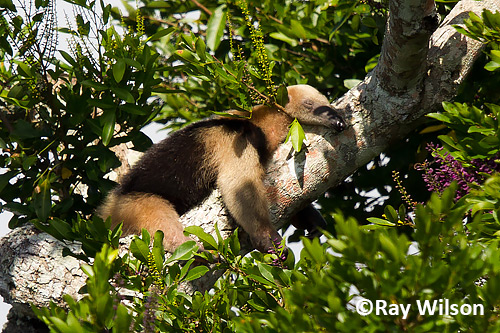
Northern Tamandua (Tamandua mexicana)
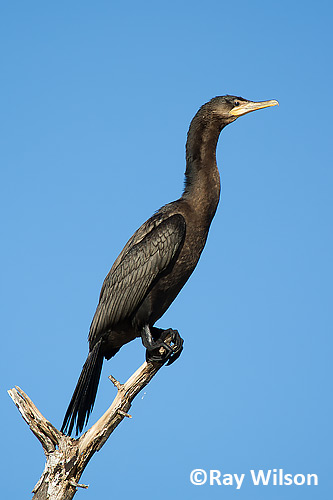
Neotropic Cormorant (Phalacrocorax brasilianus)
Ray Wilson owns the copyright of all images on this site.
They may not be used or copied in any form without prior written permission.
raywilsonphotography@googlemail.com